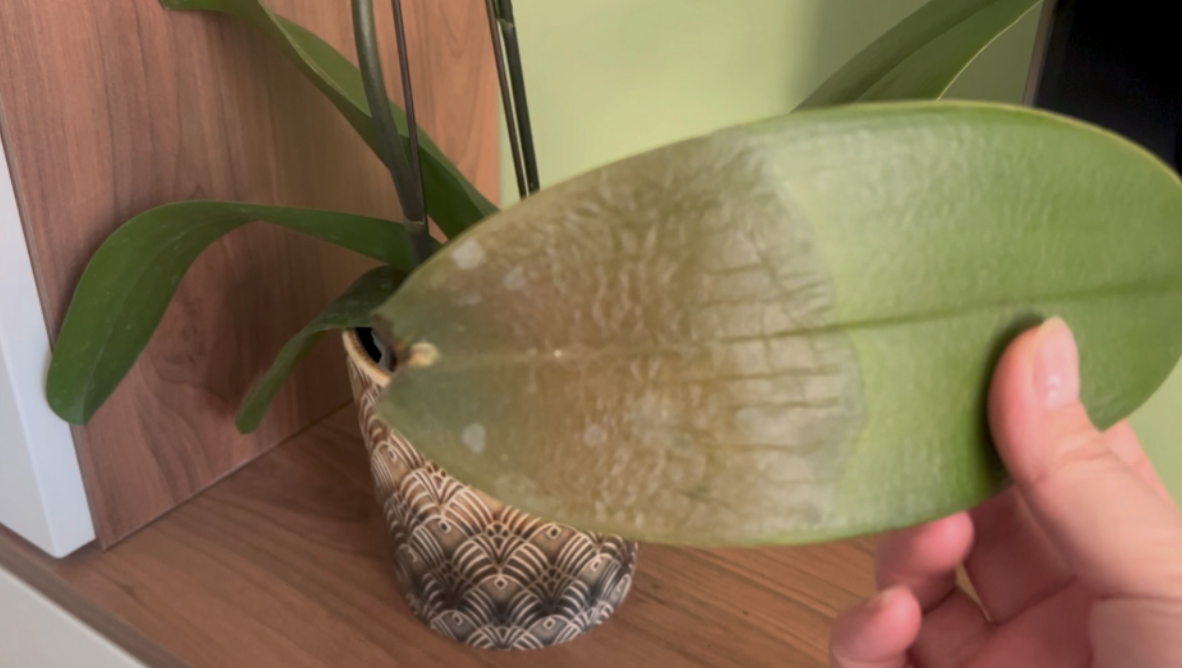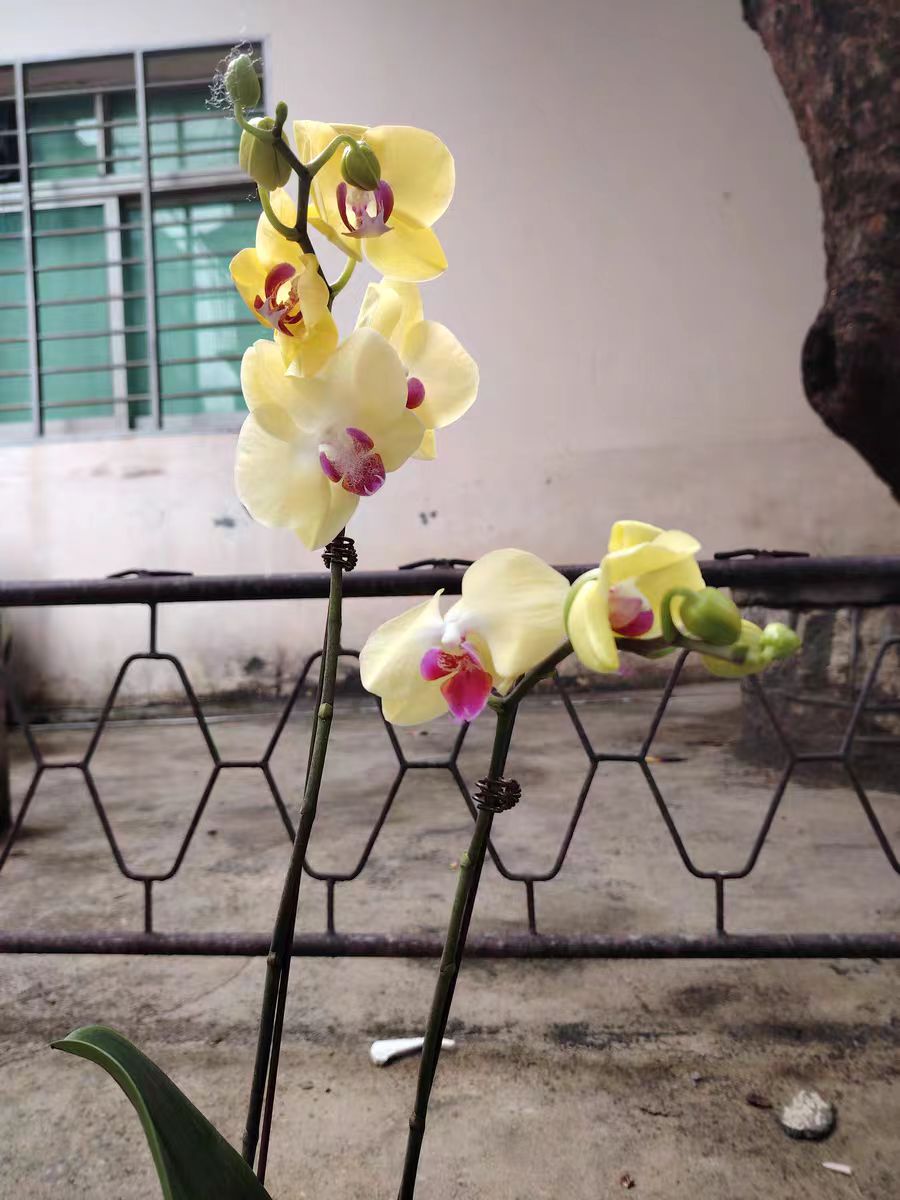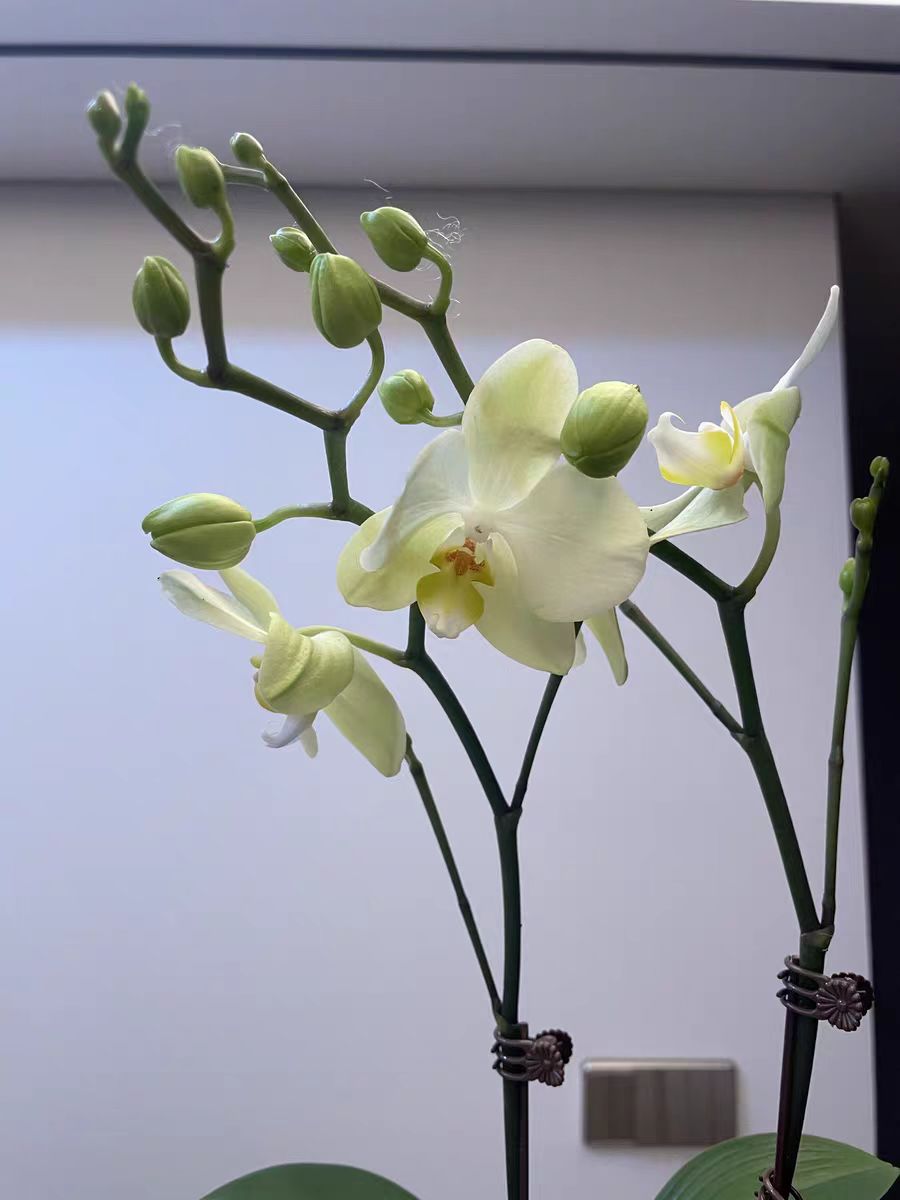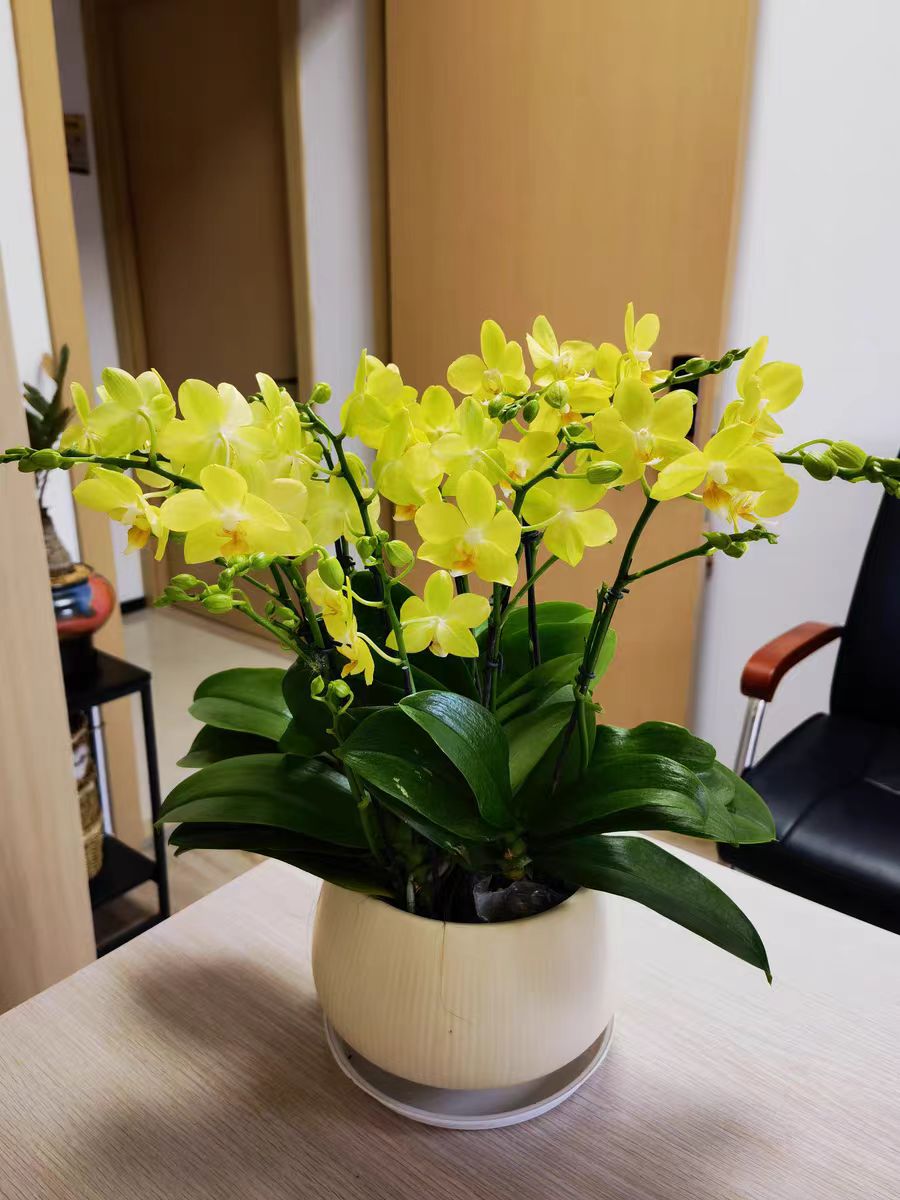Today, let's talk about the most common "leaf rot disease" of Phalaenopsis in summer. Some people also call it "soft rot disease" or "water rot disease". This disease is mainly caused by excessive humidity, insufficient light, and high temperatures in summer.
Typical leaf rot disease mostly occurs on the leaves. If it occurs on the neck, it is called stem rot. They are both caused by the same reason. Specifically, after getting the disease, the leaves will turn yellow. If you pinch it with your hand, there will be a mark. In a very serious case, the entire leaf can be pinched to release water. Such situations are all called abnormal metabolism.
Whenever a leaf is infected even a little bit, it must be pulled out immediately, and the entire leaf must be pulled out. Do not just cut off a part because only by pulling out the entire leaf can the infection be truly prevented. Additionally, it should be noted that the tools used to pull out the leaves with scissors must be disinfected, or the scissors can be sterilized directly by burning them over fire. The cut leaves must be thrown away immediately.
Generally speaking, leaf rot disease is a common bacteria in summer, and not only Phalaenopsis can be infected, but also other orchids such as Oncidium and Cattleya are prone to be infected with this bacteria. To prevent it in daily life, ventilation must be strengthened in summer. If it is too hot, the air conditioner should be turned on for it. But not everyone can do this, so it is also relatively difficult to prevent. Therefore, it is recommended to discover and deal with it in time because leaf rot disease cannot wait. For example, if it is discovered in the morning, it may be completely infected in the afternoon.
If the situation becomes serious, the sphagnum moss should be immediately reopened and the roots should be trimmed. The specific operation is to first find the hollow roots and the rotten roots, and trim them all off. Then disinfect the roots with alcohol for about 10 minutes, and then place the roots in a cool place to dry for one day. After drying, replace with new sphagnum moss for protection.
In general, we must be vigilant about leaf rot disease of Phalaenopsis because summer is quite tough for Phalaenopsis. The methods to prevent and treat leaf rot disease of Phalaenopsis include controlling appropriate humidity and light, maintaining good ventilation conditions, avoiding extreme temperature changes, regularly inspecting and removing diseased leaves, and using appropriate fertilizers to keep the plants healthy. If necessary, special fungicides can be used for prevention and control, but they should be used carefully according to the instructions.
How to treat Phalaenopsis with leaf rot disease?

Share with
Tagged in :




Leave a Reply